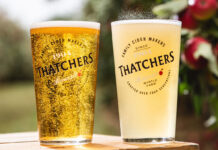The ascent of craft means a selection of artisan brews can serve an outlet well

WHILE beer has long been the on-trade’s bread and butter, the sheer size and variety within the category can be enough to bewilder even the most experienced operators.
And as a growing share of the beer market each year is claimed by the flourishing craft sector, the right approach to marketing and selling craft beer can pay dividends for savvy licensees.
The performance of craft beer was acknowledged by Heineken UK’s craft beer brand unit director, Sam Fielding, who said: “The last few years have seen an explosion in interest around the dynamic ‘craft beer’ category and it’s good news for the pub trade.
“The versatility and diversity of pubs and bars in the UK means that the industry is flourishing and more people than ever are debating, and getting excited about, different beer styles. We believe that this shift is here to stay, underpinned by the global consumer trends of authenticity, diversity and experimentation.”
Heineken estimates 75% of beer drinkers have still to try a craft beer, and so the category patently still has plenty of room to go.
The last few years have seen an explosion in interest around the craft beer category.
This was certainly supported by Molson Coors, which said 7.1 million consumers are now drinking craft beer when ‘out of home’ with that figure steadily growing.
Perhaps more important still is the fact that craft beer buffs are said to be willing to pay extra for their beers of choice.
“Consumers are searching out different styles of beer in the same way that they are searching out different dining experiences,” said Mark Bentley of Molson Coors.
“Not stocking craft could mean a missed sales opportunity. Research has also found that consumers are willing to pay more for craft, meaning the category offers outlets the opportunity to increase their sales and profits.”
Experts in the craft field have advised operators to stock a good selection, with regular changes that will fit well with their existing clientele.
Jo Stewart, co-founder of Stewart Brewing, said there are a few key points to consider when implementing or expanding a bar’s craft beer range.
She said: “Choice is important for customers so having a diverse range and one that changes is key in today’s on-trade.
“I would recommend that operators choose a selection of popular permanent favourites to offer on the bar alongside some ‘guest’ lines which change regularly as this would create an interesting range to attract customers in. Quality is also paramount, so select a variety of reputable brewers who have a diverse range of flavours.
“In terms of flavour, it is essential that today’s beer range offers a variety of styles. Craft lagers, IPA and pale ales are always popular among drinkers. Refreshing styles such as sour beers and fruit beers offer amazing flavours and are a little different from the norm.”
Simon Lewis, chief executive of West Berkshire Brewery, said that, while there are many different styles of beers available, any range has to be easy for customers to explore.
He said: “There is a great selection of beer to choose from, and by extension a lot to consider.
The key is to resist temptation if you’re considering stocking a little bit of everything.
“The key, however, is to resist temptation if you’re considering stocking a little bit of everything.
“Instead, stop and look at what you’ve got on the bar now and consider what would complement your existing range.”
An increasingly popular option for bars that are either just beginning to cater for aficionados or looking to simplify their options is to introduce a dedicated beer menu which describes the styles and flavours of the beers on offer in a similar way to a wine or whisky list.
Andrew Chapman, Keith Brewery’s chief operating officer, said that when visible fridge space is at a premium “using a beer menu, you are able to promote a much wider range of products as well as offering more in-depth information on each beer, style and brewery”.
And while it can be tempting to stock as many options as possible, the need for quality must not be forgotten.
Mark Fewster, a project manager for Vianet, quoting data from the company’s Beer Quality Report, said 90% of consumers say beer quality is very important when choosing where to drink and 60% of drinkers would rather have a smaller selection of beers served perfectly than a wider choice.
Fewster said: “Consumers interested in craft beer are proven to be more discerning than drinkers of more mainstream beer so there is a greater risk of reputational damage and financial loss if poor practices negatively impact quality.”
























